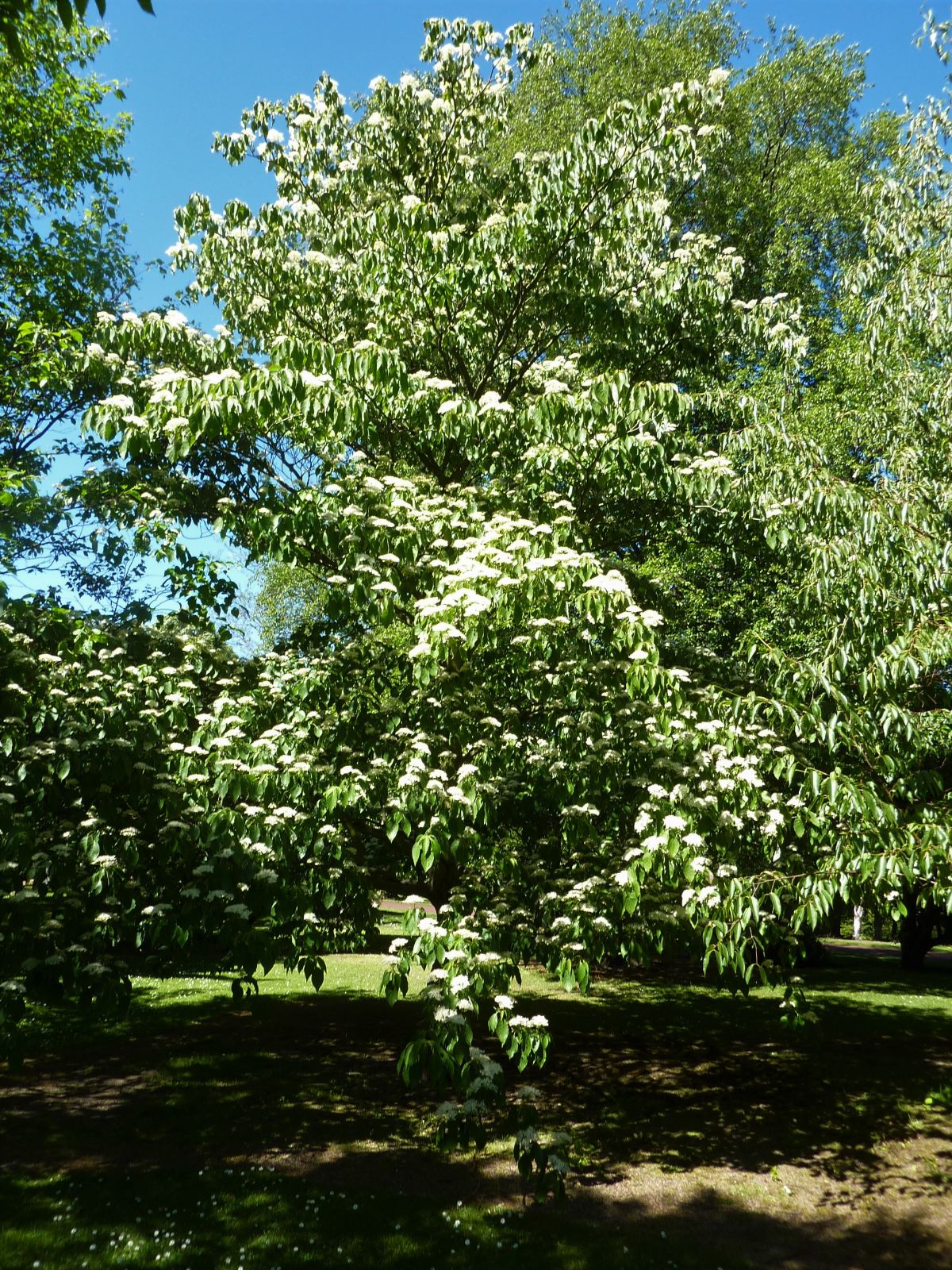Cornus controversa
Credits
Article from Bean's Trees and Shrubs Hardy in the British Isles
Recommended citation
'Cornus controversa' from the website Trees and Shrubs Online (treesandshrubsonline.
Genus
Synonyms
- C. brachypoda Hort, not C. A. Mey.
- Swida controversa (Hemsl.) Sojak
Infraspecifics
Other taxa in genus
- Cornus alba
- Cornus alternifolia
- Cornus amomum
- Cornus asperifolia
- Cornus australis
- Cornus baileyi
- Cornus canadensis
- Cornus capitata
- Cornus chinensis
- Cornus × dunbarii
- Cornus elliptica
- Cornus florida
- Cornus glabrata
- Cornus hemsleyi
- Cornus hessei
- Cornus hongkongensis
- Cornus × horseyi
- Cornus kousa
- Cornus macrophylla
- Cornus mas
- Cornus monbeigii
- Cornus nuttallii
- Cornus occidentalis
- Cornus paucinervis
- Cornus racemosa
- Cornus rugosa
- Cornus sanguinea
- Cornus schindleri
- Cornus sessilis
- Cornus stolonifera
- Cornus wilsoniana
A deciduous tree 30 to 50 ft high, with horizontal branches produced in tiers; young shoots glabrous or soon becoming so, and soon dark coloured. Leaves alternate, ovate or oval, rounded or somewhat wedge-shaped at the base, narrowed abruptly to a slender point; glabrous and dark glossy green above; glaucous beneath, and at first furnished with flattened hairs attached by their centres; veins in usually six to eight, sometimes nine pairs; blades 3 to 6 in. long, 2 to 3 in. wide; stalk 1 to 2 in. long. Flowers white, about 1⁄2 in. diameter, produced in June and July numerously in flattish cymes 3 to 7 in. across. Fruit blue-black, globose, 1⁄4 in. diameter. Bot. Mag., t. 8464.
Native of Japan, whence the cultivated plants originated, also of China and the Himalaya. This small tree, so distinct from all other cornels except the North American C. alternifolia in its alternate leaves, is of very elegant habit. It sends its slender branches out horizontally, and they are produced in a group at the end of each season’s growth. When of sufficient age, it flowers freely. In some soils the leaves turn purple before falling. Even in winter this tree is very striking owing to its rich-red young wood and regularly forked branches. A specimen at Westonbirt, Glos., measures 45 × 43⁄4 ft and there is a finer one at Nymans, Sussex.
'Variegata'
This form appears to have been introduced by Veitch shortly before 1890 and was originally grown as C. brachypoda variegata. It has long, narrow, lanceolate leaves, rarely more than 1{1/2} in. wide, often unequal-sided and more or less deformed, but strikingly variegated with an irregular, yellowish-white border; with the same elegant pose as the type.Although introduced around 1880 the name C. controversa was only given to it in 1909. Previously it had been known in England as “C. brachypoda”, and on the continent as “C. macrophylla”, in both eases erroneously, as these are synonymous terms for an opposite-leaved cornel (C. macrophylla Wall. – q.v.).


